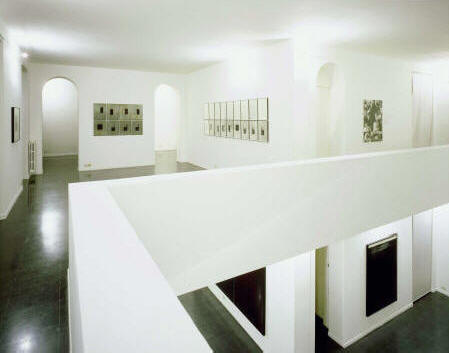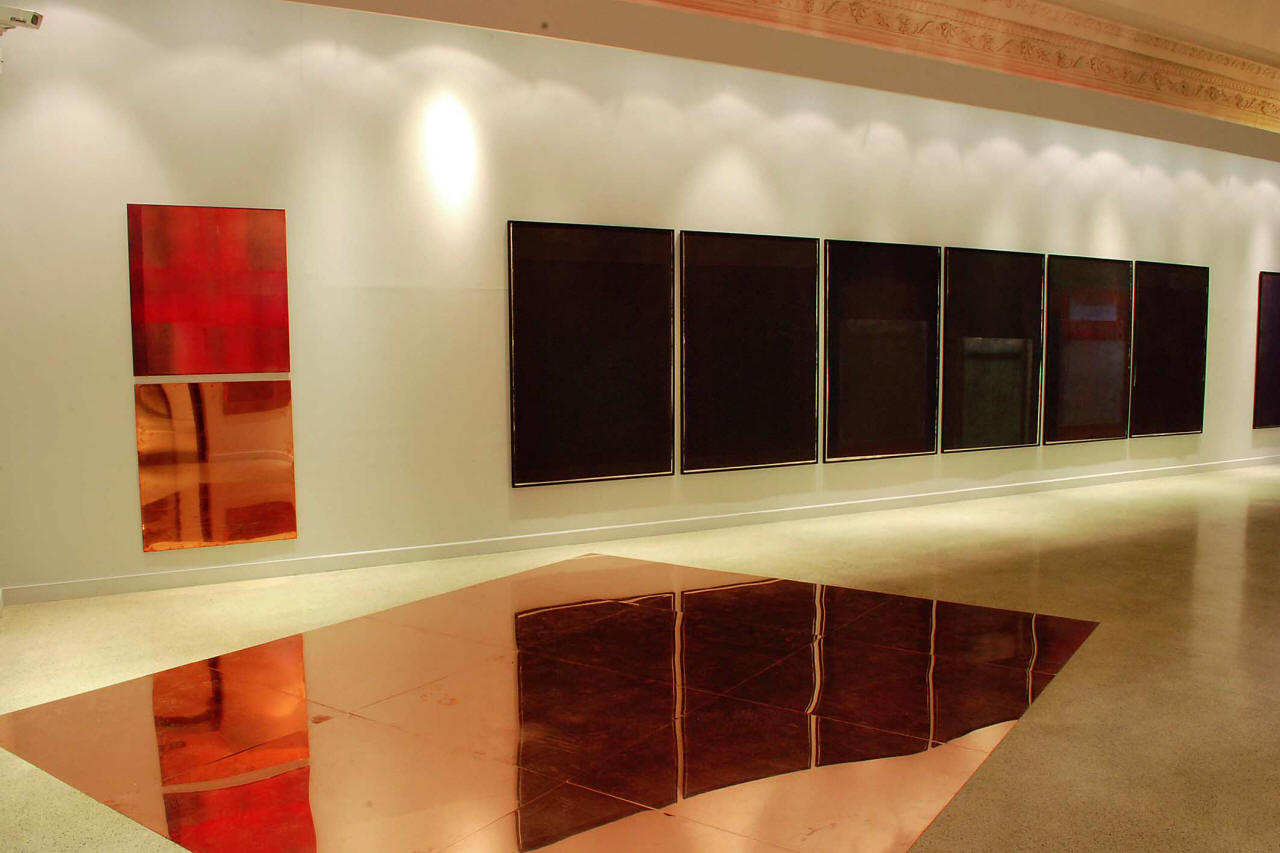 “
Thanks to this spatiality of theirs, Ciaccio’s pictures open up an inner
dimension, the domain not only of descriptive geometry, but also of profound
emotions. In the spectator, these representations stimulate the formation of a
contemplative space that fills a “void” with which the picture confronts him or
her. It is, therefore, an imaginary “space” that resounds with emotions:
thus the picture acquires not only its true depth, but also changes those
looking at it and whatever surrounds it”.
“
Thanks to this spatiality of theirs, Ciaccio’s pictures open up an inner
dimension, the domain not only of descriptive geometry, but also of profound
emotions. In the spectator, these representations stimulate the formation of a
contemplative space that fills a “void” with which the picture confronts him or
her. It is, therefore, an imaginary “space” that resounds with emotions:
thus the picture acquires not only its true depth, but also changes those
looking at it and whatever surrounds it”.
Kurt W. Forster
“Inserted in the architectural space of the exhibition, Ciaccio’s works, with their carefully calculated disposition, create intervals, rhythms, seriality with variations, differences and repetitions. Not only do they organize space as seen and as experienced, but they also support perceptual architraves and emotional structures. Thus they constitute a single huge picture, like a musical composition consisting of melodic and harmonic elements”.
Remo Bodei
“ In Ciaccio’s work, the concept of Threshold , like the crossing of a threshold, means – as in esoteric and psychoanalytical literature – passing from the exterior (the condition of the uninitiated) to the interior (that of the initiate), in order to reach the Sacred, which, always incomplete, is the absolute mystery”.
Arturo Schwarz
Space, Places, Intervallum
When examining some of the titles of Roberto Ciaccio’s works — Specchio Soglia (Mirror Threshold), Luoghi (Places), Infinitononinfinito (Non-finite Infinity), Recto/Verso, Assenza (Absence) — one is inevitably aware that he is engaged in a quest for a close relationship with space. In the same way, when visiting one of the artist’s exhibitions, one is also inevitably aware, in the installation, of the coherent character of his work, especially with regard to the architecture of the building housing it, or rather, with which it interacts.
In fact, for Ciaccio, the building is not merely a container, but it is also another tool with which to work. Light and shade, materials and reflections, height and depth, and openings and thresholds are elements with which he can interact and that suggest an exhibition installation in dialogue with the works.
Thus one could say that Ciaccio creates his installations poetically in accordance with Peter Zumthor’s definition of architecture: the creation of an organic whole having meaning, starting from innumerable single components that are distinct with regard to function, form, materials and dimensions. “The arrangement prepares things for the possibility of belonging to a place and, starting from this, to establish a link between them”. (Martin Heidegger, Art and Space)
In architecture there are two basic ways of spatial creation: the closed body that isolates a space inside it, and the open body that contains a portion of space linked to infinite continuity. Ciaccio’s spatial creations are consistent with the latter possibility: the extension of space is visualized and modelled through the placing and nonocclusive alignment of the bodies, plates and sheets, which open up new unexplored depths. Blank copper plates — the matrices of possible works — placed on the floor reflect the ceiling, dissolving space and projecting flashes of light onto the walls, creating a dreamlike vision. Similarly, iron plates freely suspended in space and, placed parallel to each other, guide the observers, inevitably orienting their perception of the surrounding space. From the depth of colour, Ciaccio’s works release a sort of field of energy — or an extension or space — that receives, envelops and withholds. The interaction between the work and the observer is dynamically determined by the formation of an intervallum in both senses — spatial and temporal — of the term. Before a plate or sheet, the observer is induced to explore the space, to perceptually measure this field and to seek the distance established by the work: this is a subjective, inner and ephemeral distance that changes with the variation of the light and interacts with the architectural space. “In the Greek sense, space is considered starting from the body, as its place and the container of places. Each body, however, has its own place, which is similar to it…. Despite all the differences between the Greek thought and the modern one, space is represented in the same way — that is, starting from the body. Space is its three-dimensional extension. In it, the bodies and their movements have their paths, their times, their practicable distances and those intervals of time in which, so to speak, they go for a walk”. (Martin Heidegger, Art and Space) The particular materials used by the artist, which are able to shine and resonate, assume poetic qualities that the observer is called on to discover and experience personally in the context of the architectural space of which they inevitably come to form part.
Alessandra Castelbarco Albani
Marco Di Nallo
